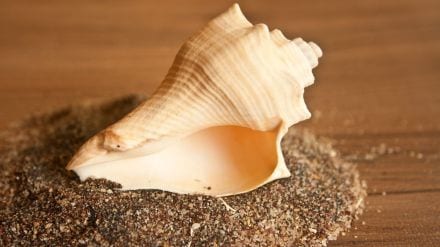Sleep apnea is emerging as a major health issue worldwide, affecting millions across all age groups. Rising obesity rates and sedentary lifestyles have contributed to the increase in cases in recent years. Sleep apnea is a disorder in which a person’s breathing repeatedly stops and starts during sleep, leading to poor-quality rest and daytime fatigue, as per Mayo Clinic. Common symptoms include loud snoring, gasping, and choking during sleep, leaving sufferers feeling extremely tired during the day.
A major global study published in The Lancet Respiratory Medicine in 2019 estimated that about 936 million adults worldwide, aged 30 to 69, have mild-to-severe obstructive sleep apnea (OSA), with around 425 million experiencing moderate-to-severe forms. In the United States alone, the American Medical Association estimates that over 30 million people live with sleep apnea.
Now, a new study suggests that blowing into a conch shell could help tackle the symptoms of this sleep disorder.
How Shankh blowing can help with sleep apnea
‘Shankh blowing’ is an old breathing practice where you take deep breaths and blow strongly into a spiral-shaped conch shell. Experts of the study say it may help strengthen the throat and soft palate muscles, which often relax and collapse during sleep in people with sleep apnea. Dr. Krishna K Sharma at the Eternal Heart Care Centre and Research Institute in Jaipur, India, tested the technique on 30 adults aged 19 to 65 with obstructive sleep apnea. Half of the participants were taught shankh blowing, while the others practiced regular deep breathing exercises. Everyone practiced for at least 15 minutes a day, five days a week, over a six-month period.
Usually, OSA is treated with lifestyle changes, exercises, or medical devices such as Continuous Positive Airway Pressure (CPAP) machines, which deliver pressurized air through a mask to keep the airways open at night. While effective, many patients find CPAP machines uncomfortable.
Results of the study
The results were promising as participants who practiced shankh blowing reported being 34 per cent less sleepy during the day, had higher blood oxygen levels at night, and experienced four to five fewer apnea episodes per hour on average.
“The way the shankh is blown is quite distinctive,” said Dr. Sharma. “This action creates strong vibrations and airflow resistance, which likely strengthens the muscles in the upper airway. These muscles often relax and collapse during sleep in people with OSA, causing breathing to stop.”
Word of caution
While the study offers promising results, experts caution that it was small and more research is needed. Dr. Erika Kennington, head of research and innovation at Asthma + Lung UK, said, “It’s too soon to say for certain that conch blowing can help people manage sleep apnea. Larger trials are needed, and it should be compared with other proven strategies like reducing alcohol intake, staying active, and maintaining good sleep habits.”
Obstructive sleep apnea is a long-term condition that can seriously affect quality of life if left untreated. Hence, researchers plan to conduct a larger trial across multiple hospitals to explore its benefits further.
